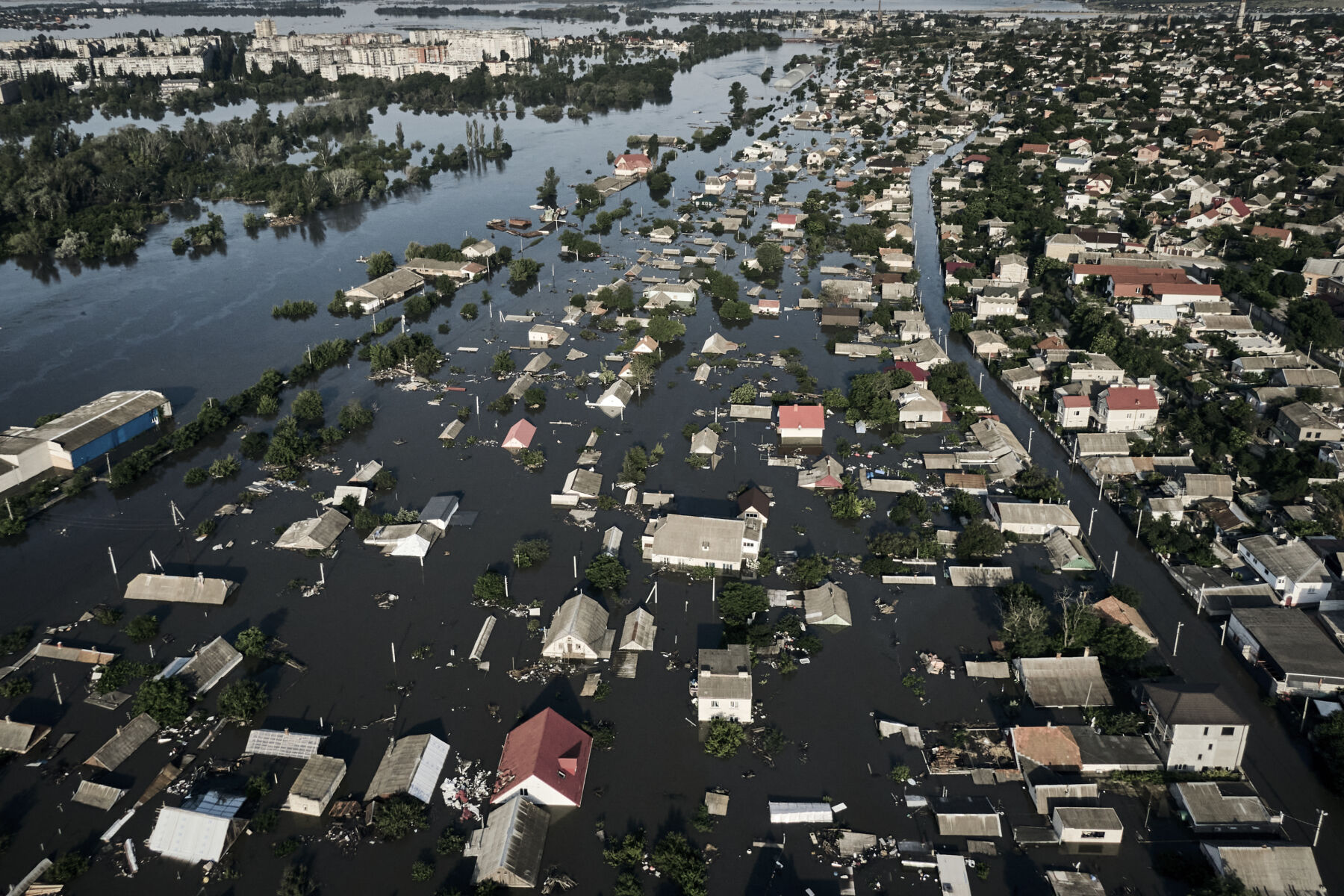Ukrainian teen trapped amid Russian-occupied flood zone fears help won’t come

In the attic of a flooded home, a Ukrainian teenager and her 83-year-old grandfather, along with two other elderly individuals, have been waiting for days to be rescued after a catastrophic dam collapse in the town of Oleshky. However, help has been slow to arrive, as Russian forces are reportedly seizing rescue boats and only assisting those with Russian passports.
Oleshky, a Russian-occupied town situated across the Dnipro river from the city of Kherson, has a pre-war population of 24,000. According to volunteers and those stranded, Russian soldiers are preventing rescuers from reaching the most affected areas and confiscating their boats, fearing saboteurs. As a result, thousands of people are believed to be trapped by floodwaters spread across 600 square kilometres (230 square miles) of the Kherson region, with about two-thirds of the flooded areas under Russian occupation.
Yektarina But, the 19-year-old girl trapped in the attic, and the three elderly individuals with her have no electricity, running water, or food. With her mobile phone battery dying, But fears that no one will know about their deaths. Her grandfather, who had suffered a stroke, is running out of medicine, and one of the women with them cannot move on her own.
Viktoria Mironova-Baka, who is in contact with her relatives stuck in the flooded region from Germany, said that Russian soldiers were only helping those with Russian passports. Her grandmother, aunt, and over a dozen other people are taking shelter in the attic of a two-storey house.
The situation is vastly different in the Ukrainian-controlled territory affected by the dam collapse, where authorities have been actively evacuating civilians and bringing in emergency supplies. President Volodymyr Zelenskyy visited the area to assess the damage, while Kremlin spokesman Dmitry Peskov said Russian President Vladimir Putin currently has no plans to visit the Moscow-occupied areas.
The Kakhovka hydroelectric dam, about 80km (50 miles) upstream from Oleshky, collapsed on Tuesday, sending torrents of water down the Dnipro river and across the war’s front lines. More than 6,000 people have been evacuated from dozens of inundated cities, towns, and villages on both sides of the river. The flooding has caused at least 14 deaths, left many homeless, and tens of thousands without drinking water. The disaster has also ruined crops, displaced land mines, caused widespread environmental damage, and set the stage for long-term electricity shortages.
Ukraine accuses Russia of destroying the dam with explosives, while Russia claims that Ukraine destroyed it with a missile attack. The dam had been weakened by Russian neglect, and water had been washing over it for weeks. It had been under Russian control since the invasion in February 2022.
Russian forces have also been shelling areas hit by the flooding, including the front-line city of Kherson. Some evacuation points in the city were hit, wounding nine people, according to Ukrainian officials.
Oleshky Mayor Yevhen Ryshchuk said that water levels were beginning to fall, but approximately 90% of the city remained flooded. Russia claims to be helping the region’s civilians, with Moscow-appointed regional Governor Vladimir Saldo stating that at least 4,000 people had been evacuated from the flood zones. However, Ryshchuk dismisses such claims, saying some people trying to leave flooded areas were forced back by Russian soldiers who accused them of being “waiters” – people waiting for Ukraine to reclaim control of the region.
Ukrainian military footage showed their forces dropping a bottle of water from a drone to a boy trapped with his mother and sister in the attic of their home near Oleshky. Ukrainian soldiers later evacuated the family and their pets to the city of Kherson. Much of the help is being organised by volunteers communicating on the encrypted app Telegram, with messages about stranded people appearing in these groups every few minutes. One volunteer group has a map showing over 1,000 requests to locate and rescue people, mostly in Oleshky and the nearby town of Hola Prystan.
Latest Thailand News
Follow The Thaiger on Google News:


























